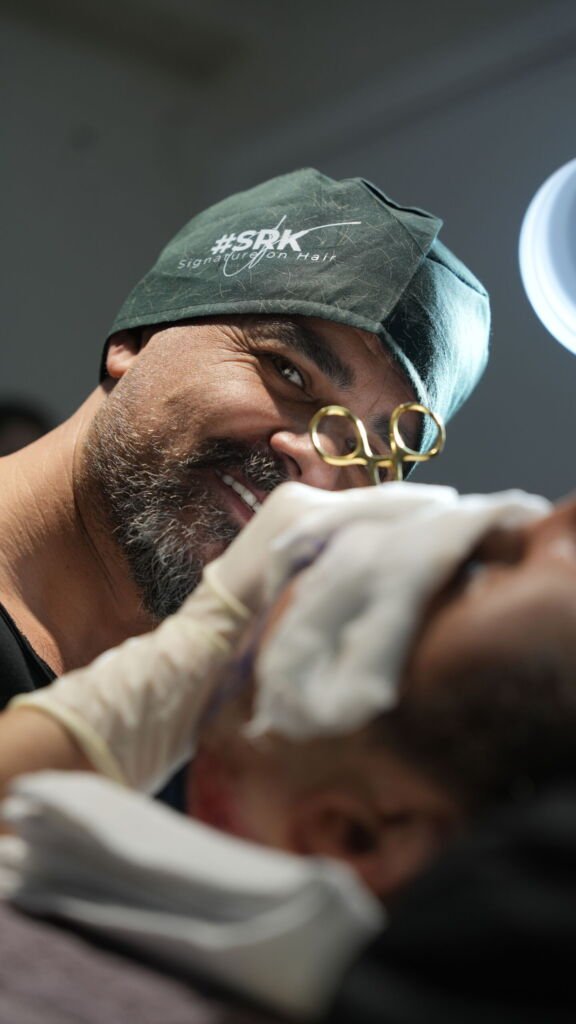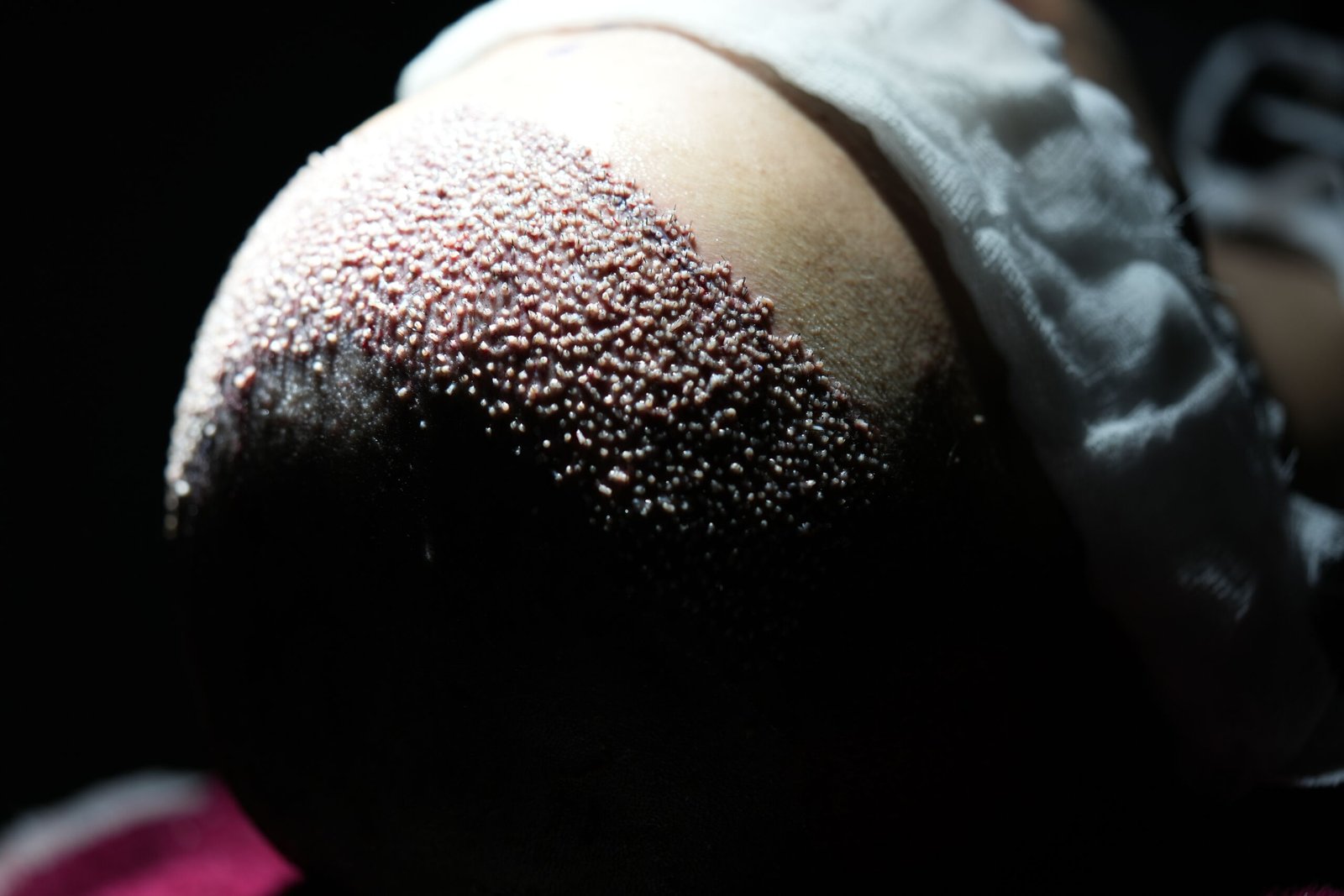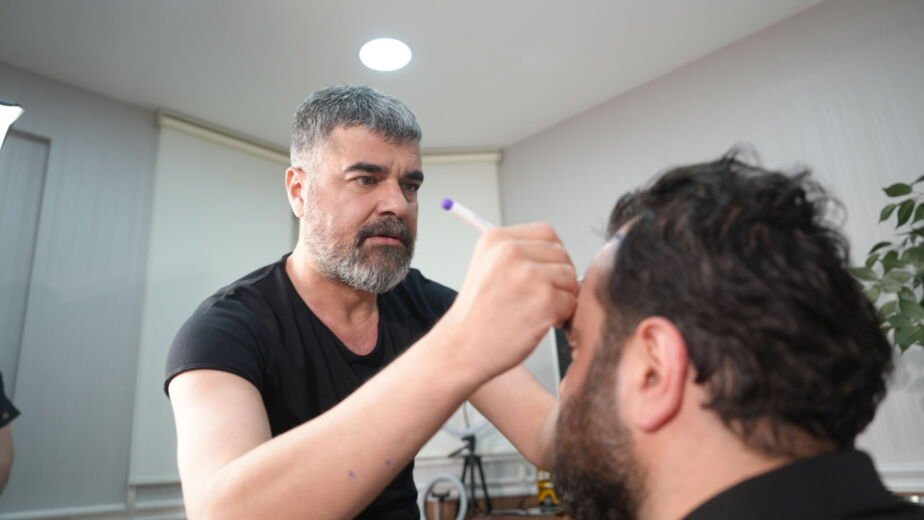For many people, hair loss can be a tough experience, and if you’re at the exploratory stage of looking for a solution, you’ll undoubtedly come across the hair transplant. The 2 methods of carrying out this surgery involve the terms FUE and FUT. These terms refer to the two popular and effective methods of restoring hair – Follicular Unit Extraction and Follicular Unit Transplantation – and in this article, we will cover both. The main difference is that they differ in how the hair is harvested, but also in what kind of scarring you can expect, the recovery times, and even the cost. So, which one is the right one for you? Let’s break it down with some straight talk so you can make an informed decision as to what method is best for you.
What is FUE, in Simple Terms?
With FUE, the doctor removes individual hair follicles from the back or sides of your head (where the hair is typically thicker and more permanent) and transplants them to thinning or bald areas. This is done using a tiny, circular tool – think of it like a mini punch. Since each follicle is removed one at a time, there’s no large scar, just tiny dot marks that are usually hard to see.
And FUT? How’s That Done?
FUT, often called the “strip method,” involves removing a narrow strip of scalp from the donor area. From that strip, the surgeon extracts individual follicular units under a microscope, then implants them where needed. This method does leave a linear scar, though it’s often hidden under longer hair.
Why Some People Prefer FUE
- Minimal visible scarring: One of the biggest appeals is that there’s no long scar.
- Shorter healing time: Since there are no stitches, people often get back to normal activities faster.
- More flexibility with hairstyles: You can still rock a buzz cut without worrying much about visible scars.
- Less post-surgery discomfort: Most patients report that the procedure feels less invasive.
But there’s a catch:
- It takes longer: Because follicles are harvested one at a time, procedures can run long.
- It’s usually more expensive: The precision and time involved drive up the cost.
- Not ideal for large sessions: If you need thousands of grafts, FUE might require multiple sittings.
Why FUT Still Has Its Fans
- More grafts, faster: With FUT, a large number of grafts can be moved in a single session.
- Generally costs less: The procedure is more time-efficient, which can translate to a lower price.
- Better for extensive hair loss: If you need major coverage, FUT can often deliver more in one go.
But again, it’s not perfect:
- That scar: If you wear short hair, the linear scar may be visible.
- Longer downtime: Recovery typically takes more time because of stitches or staples.
- A bit more discomfort: Some patients report tightness or soreness at the back of the head for a while after surgery.
Which One’s Right for You?
Honestly, it depends on your personal situation. Here’s a general idea:
FUE might be a better fit if you:
- Are in the early stages of hair loss
- Prefer wearing your hair short or buzzed
- Want a quicker recovery
- Don’t need a huge number of grafts
- Have a flexible budget
FUT might make more sense if you:
- Have significant thinning or bald areas to cover
- Are okay with a scar that’s hidden under longer hair
- Want the most grafts possible in one session
- Need a more budget-friendly option
- Don’t mind taking a bit more time to recover

Other Factors to Think About
Choosing between FUE and FUT isn’t just about what sounds better on paper. Consider your hair goals a few years down the line. Are you open to more than one session? Are you comfortable with a scar if it means better density? These questions matter.
Also, your surgeon’s experience plays a massive role. A good surgeon can make either technique look natural, but a less experienced one might not.
The Bottom Line
Both FUE and FUT can give excellent, natural-looking results. What it comes down to is your hair type, how much restoration you need, your lifestyle, and yes – your budget. There’s no one-size-fits-all answer here.
If you’re unsure which route to take, it’s worth speaking with a trusted hair restoration specialist. A good consultation will look at your hairline, donor area, age, long-term goals, and even your future hair loss pattern.
Getting your hair back is a personal journey, and whichever method you choose, the goal is the same: a fuller, more confident you.
What Do I Do Next
Trusted by patients worldwide, Serkan Aydin Hair Clinic delivers expert-led, scar-free hair restoration with natural results and personalised care. Contact the friendly team today to plan your next step.




